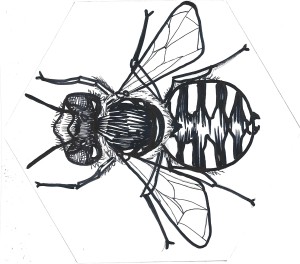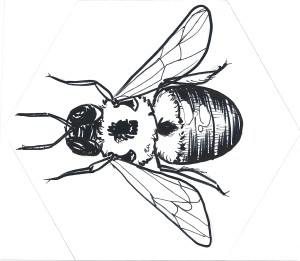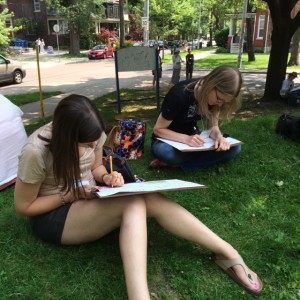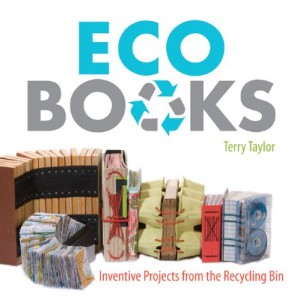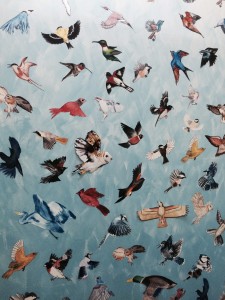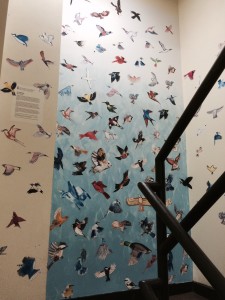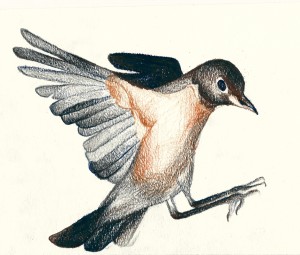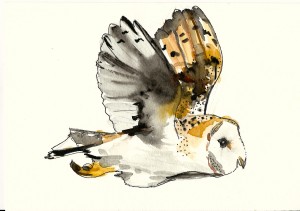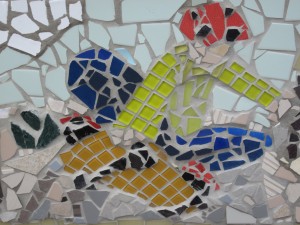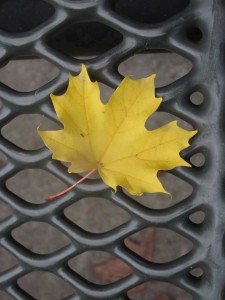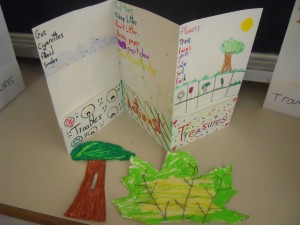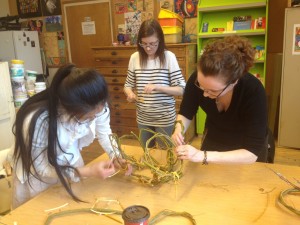With the start of a new academic year comes the beginning of a new Eco-art project at OISE, one of my favourite parts of the year. Last year we focused on birds (via the FLAP installation), so we thought it made sense to follow up with one on bees (so we’ll have the ãbirds and the beesã in our walking art gallery!) The plight of bees is being well-covered in the general media these days – bee populations are declining rapidly, due in part to the use of new pesticides like neonicotinoids, loss of habitat,ô and climate change. As bees are responsible for pollinating about 30% of our plant-based food crops, this puts our own food supply at risk – a good reminder that everything is connected. So our next art installation is creating a ‘hive’ of line drawings of Ontario bees, combined with text about their importance; this is helping my students to learn more about bees and the challenges they face. I have attached a few photos of some of the first drawings…check back here for photos of the full installation in April!
Collaborative Art-making in ‘Common Threads’
I attended a great talk on Eco-art recently by artist Sharon Kallis from Vancouver. She has authored a new book called ‘Common Threads’, which explores the use of collaborative art making as a way to raise awareness of the natural world and the environmental issues it faces. Invasive plant species are of particular concern, as she experiments with ways to re-purpose these plants as art material to deal with sustainability challenges. Sharon has created clothing out of plants, for example, weaving leaves and stems into functional material. I really enjoyed learning more about the community gardens she has been involved in in Vancouver, always with an eye on how the garden might be used as exhibition site or as a source for biodegradable art materials.ô ô Recently she has been growing flax to make into linen fibre, (demonstrating that she has far more patience than I do!) I really appreciate her use of art-making techniques with a rich history, and ones that have often been positioned as ‘women’s work’, helping to reclaim these into the lexicon of contemporary art practice. At the core of this work is always a focus on using art to build community, an important part of living more sustainably on the earth. More info about Sharon’s work can be found here:ô http://sharonkallis.com/ 
Mapping Sensory Experiences of Place
I taught a professional development course for teachers from the Toronto District School Board in July – always a pleasure to work with teachers who are so passionate about environmental learning that they give up three weeks of their summer vacation to learn more about it! I was pleasantly surprised to see such an interest in environmental art-making ã there were lots of great ideas shared around the table, evidence of the experimentation going on in Toronto schools about how to use the arts to support eco-literacy. Many expressed their enjoyment of the ãsensory mappingã activity we did on our first day together ã such a simple way to get learners to connect with and reflect on the power of place-based education. The teachers were asked to capture their sensory experience of the local park into the form of a pastel drawing. This requires them to consider how a sound translates into a line, a touch into a colour, or a smell into a shape. This proved to be a great way to get them to focus on the place, and to remove the inhibition that some have about drawing as all of the drawings turn out abstractly. Later in the course we talked about the power of ãcreative mappingã, drawing on the books The Map as Art (by Katherine Harmon) and Mapmaking with Children (by David Sobel.) Mapping and sensory experience can go hand in hand to help learners of all ages experience the environments in which we live in creative ways.
Creating Eco-Friendly Sculptural Books
While Iãve been busy with collaborative eco-art installations with my students this winter, summer always gives me a little more time to work on my personal artworks.ô Iãve been experimenting with sculptural book-making in recent years ã I love the combination of text and image, and the surprise of taking a traditionally flat object and making it come alive in three dimensions.ô So how do you make this technique more eco-friendly?ô Working with paper is a first step as it is easily biodegradable – that’s a natural when it comes to book-making.ô But Iãve also been drawing inspiration from a variety of sources, looking for ways to incorporate natural or found objects into my bookworks.ô I love the Spirit Books of Susan Kapuscinski Gaylord (http://www.susangaylord.com/the-spirit-books.html), who uses branches, grapevine and dried berries in this evocative book series.ô Mary Ellen Campbellãs books also incorporate a range of natural materials, often layering one on top of the other for a beautiful effect (find examples of her work on Pinterest.)ô Basi Irland takes a very different approach, freezing water and seeds into book forms that become part of a community performance as they float downstream (http://www.basiairland.com).ô If youãre looking for exemplars of how to re-use found objects and turn them into books, look no further than Terry Taylorãs EcoBooks: Inventive Projects from the Recycling Bin.ô Once youãve read this book, youãll be excited to try this yourself ã youãll be seeing possible books in everything you discard!
For the Birds: Raising Awareness about FLAP
We finished our FLAP 2.0 eco-art installation just in time for World Migratory Bird Day on May 10th!ô The work focuses on the plight of migratory birds in urban environments by depicting dozens of Ontario birds taking flight, using artistic means to raise awareness about FLAP ã the Fatal Light Awareness Program.ô Representing the millions of birds killed annually in collisions with buildings, this artwork is an aesthetic form of eco-justice education, encouraging viewers to consider the needs of all living things in the creation of more sustainable ways of living.ô Each bird was drawn or painted by a member of the OISE community, then scanned and printed onto an adhesive material made from 100% recycled plastic. This art installation is part of the ‘Take the Stairs’ Campaign, forming part of the walking art gallery that encourages the OISE community to take the stairs, rather than elevators (conserving energy and improving health and wellness of the walkers). To see some of the detailed images from this installation, visit my February post. ô To find out more about FLAP, go to: ô http://www.flap.org/ ô and ô WM Bird Day at:ô http://www.worldmigratorybirdday.org/ô ô What creative act could you do ãfor the birdsã?
Nature is the best art supply store!
The snow is just melting here, and we Canucks are emerging from the comfort of our well-insulated abodes to rediscover the beauty of a warmer natural world.ô I get excited about the idea of my gardens starting to grow again; spring, after a long winter, is always a hopeful time of year.ô One of the things I start to dream about is using more natural materials in my artworks:ô what new material can I find?ô What new material will find me?ô Nature is the best art supply store; the materials are plentiful, inexpensive, biodegradable, and if harvested properly, sustainable as well. ô I often get asked about the ethics of harvesting natural materials, especially in urban spaces; I think that, in many ways, going all natural is more ethical than using manufactured materials.ô The latter typically has a much bigger ecological footprint, and is more toxic, so moving to biodegradable materials can certainly be a positive step in the right direction.ô But ensuring that you are finding sustainable sources of natural materials, that don’t harm their living sources, is crucial.ô So a few ideas for including more natural materials in your art-making:
- painting on leaves, rocks, or bark
- dyeing fabric with natural dyes made from onions, beets, red cabbage, etc.
- creating collages made with natural materials
- pressing natural materials into wet clay to make tiles or ãfossilsã
- rubbings of natural textures (leaves work beautifully for this)
- blowing bubbles with food dye and pressing onto paper
- making handmade paper with natural components such as seeds or leaves
- using branches as ãframeã for weavings
- using beeswax as pigment or adhesive
For more ideas, check out the following website:
Art and your Natural Environmentô ô http://arts.umich.edu/programs/funpages/environmentart/
Flapping Again!
We’re flapping again!ô A few years ago at OISE we did an eco-art project to raise awareness about the plight of migratory birds in urban environments as part of FLAPô – the Fatal Light Awareness Project.ô At that time I worked with my students to create over 300 handmade relief prints that were distributed to OISE offices to encourage faculty and staff to turn off their lights and close their blinds at night to reduce bird collisions with their windows.ô We had such a positive response to these prints that we’re working on FLAP 2.0 – an art installation to raise awareness for the rest of the institution.ô Working with our students, we’re in the process of making over a hundred watercolours of birds indigenous to south-western Ontario.ô These bird artworks are being scanned and printed onto a type of plastic/paper with an adhesive backing (made from 100% recycled plastic!), and then will be cut out to make life-sized bird stickers.ô They will be grouped into a huge flock in our walking art gallery (in the main stairwell), hopefully causing a FLAP when they are unveiled!ô Here are a few images that have been created so far…photos of full installation will be posted on my website early next summer.
Pinning my passion for eco-art
My new favourite creativity tool is a digital app called Pinterest.ô This app is easy to learn and use, and is perfectly geared to visual learners.ô Think of it as a series of (digital) bulletin boards that allow you to save images anywhere on the Internet in an easily accessible way – no more file folders of clip art, lists of URLs, or bookmarked webpages.ô With the Pinterest app installed on your favourite digital device, you ‘pin’ an image by clicking on the ‘pin it’ button (saving not only the image to your bulletin board, but its original URL as well. You can access other people’s bulletin boards by searching under key words…which (finally) connects back to environmental art.ô Pinterest has many boards related to nature art, land art, ecology and art, environment and art – there is a board for just about any variation on eco-art you’d like.ô I’ve started to compile a couple of boards in this area – check them out under the names ‘art & nature’, ‘art in schoolyards’, ‘upcycling’, ‘environmental art’ and ‘eco-art ideas’.ô If you’re up and running on Pinterest, send me your board names if they connect to these topics, and I’ll re-pin your fascinating finds!
Planting the Seeds for Environmental Stewardship
I worked on an environmental art project with a local Catholic school this fall, thanks to a great collaboration between Arts for Children and Youth (AFCY) and the Friends of Roseneath Park.ô Roseneath is a small park located in central Toronto, sadly neglected and full of litter from a nearby parking lot, until the Friends group contacted AFCY to help deepen the communityãs sense of connection to it.ô They started with a community mural project this last summer – a photo of part of it is below. ô I was invited to work with local school children in grades 3 and 4 to heighten their awareness of the park, and hopefully strengthen their sense of stewardship for it.ô We used a ãtreasures and troublesã approach, searching for the environmental strengths and challenges of their schoolyard at first, and then the park, working towards growing an understanding that both humans and more-than-humans share a desire for an environment that is free of garbage, with clean air, water, and lots of trees and plants.ô The children relished an opportunity to learn outside, even in the chilly weather of late October, and took wonderful photographs of the treasures and troubles they found in the park ã one example is below, of a maple leaf on a park bench (both treasures from the perspective of the young photographer.)ô Back in the classroom, their drawings, photos and words formed the basis of their own sculptural books, one way to share what they have learned about local stewardship with others.
Working with Willow
I had a Toronto artist, Morgan Zigler, do a workshop for my teacher candidates on working with willow in the spring; we had a great time! Itãs an easily-renewable, accessible, (often free) natural material to work with, making it just about as sustainable as it gets. We had a lot of fun learning the basics of working with willow, and making a few sculptures for the OISE Learning Garden ã a few photos of my students at work are below. Morgan has done a lot of this type of work at Evergreen BrickWorks, modelling how to use hands-on, experiential learning very effectively with youth; he has also done some great installations with using living willow in schoolyards.ô You can check out his website at:
http://foolishnature.org/homely/environmental/wood/wood.html
If you want to really take this to the zenith with your students, check out the work of Patrick Dougherty; he uses willow and other types of branches to create the most amazing natural architectural works!ô ô His website is beautiful in its own right, and contains lots of photos of his work:ô http://www.stickwork.net/ô Guaranteed to get any learner excited about the possibilities of working with willow!
